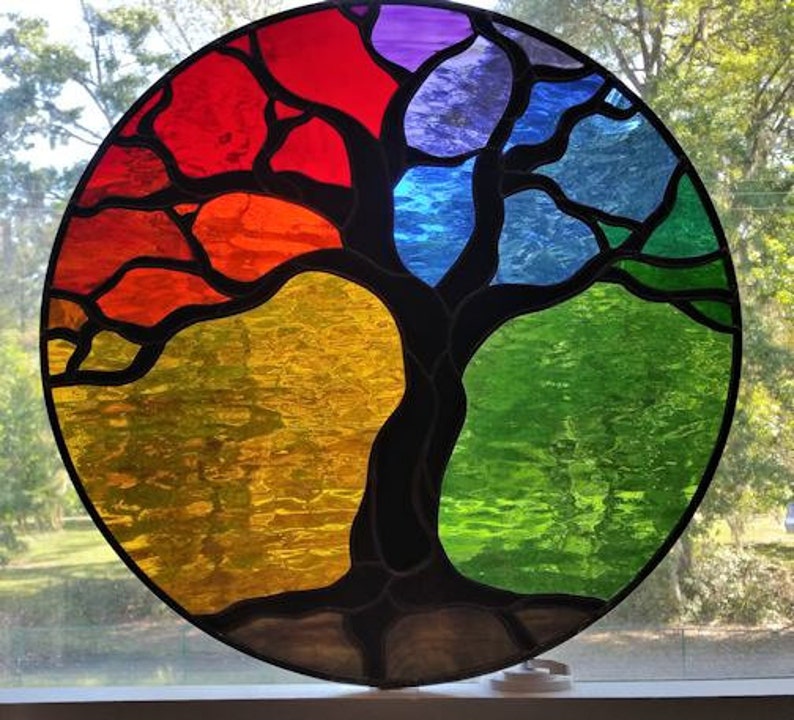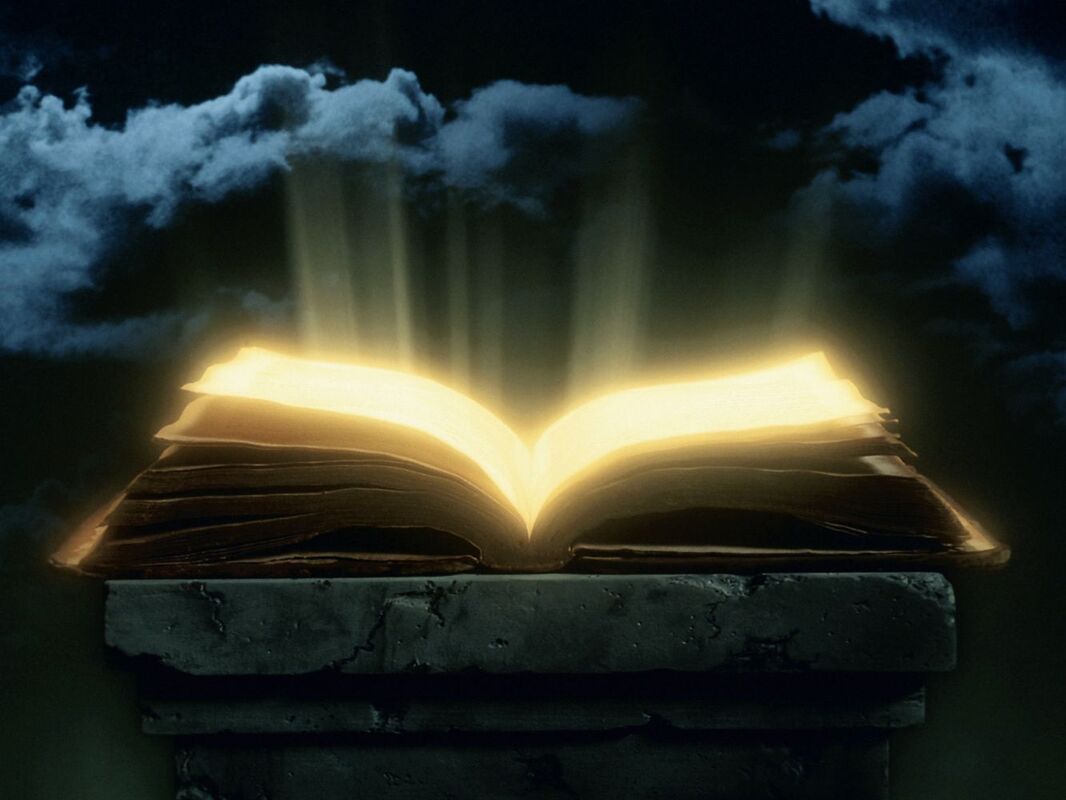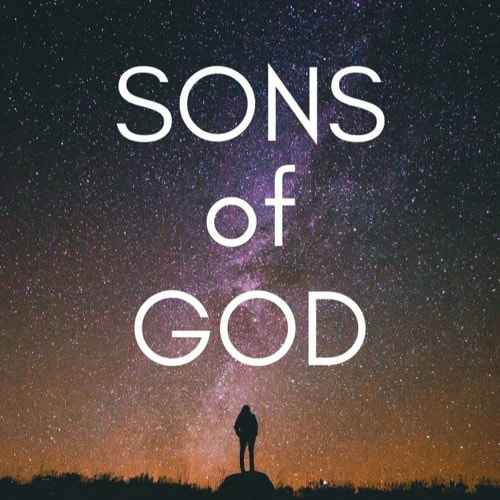Hello, the answer would be yes, if the Bible is just the writings of God and only that then the answer is correct. So, what actually is God doing? He is giving culture and principles to the Jewish community the nation of Israel was founded in 1950's that grew the same way as the Exodus story by releasing the Hebrew slaves from Egypt. How does history relay the story of the holocaust of Jews if the Bible was not real?
What is the synonym of holocaust?
carnage, catastrophe, devastation, extermination, genocide, massacre, mass murder, slaughter, annihilation, extinction, immolation, inferno.
What is the meaning of concentration camps?
concentration camp, internment centre for political prisoners and members of national or minority groups who are confined for reasons of state security, exploitation, or punishment, usually by executive decree or military order.
Who invented the concentration camp?
The camps were established by the British as part of their military campaign against two small Afrikaner republics: the ZAR (Transvaal) and the Orange Free State. The scandalous campaign is back in the news following controversial comments by British Conservative MP Jacob Rees-Mogg on a BBC television programme.
Did England use concentration camps?
During the Second Anglo-Boer War which lasted from 1899–1902, the British operated concentration camps in South Africa: the term "concentration camp" grew in prominence during that period.
How many people died in British concentration camps?
The concentration camp figure of deaths spans a year, totalling more than 48,000 who perished, Boer and black, from a prisoner population of less than 200,000. Glasgow, in 1901, had a population of 762,000 and, according to the National Records of Scotland, 16,190 people died. That dropped slightly to 15,530 in 1902.
What do they call WWII?
World War II, also called Second World War, conflict that involved virtually every part of the world during the years 1939–45.
What is WWII known for?
World War II was the biggest and deadliest war in history, involving more than 30 countries. Sparked by the 1939 Nazi invasion of Poland, the war dragged on for six bloody years until the Allies defeated Nazi Germany and Japan in 1945.
How many died in WWII?
An estimated 40,000,000 to 50,000,000 people died during World War II.
HOLOCAUST ENCYCLOPEDIA
Killing Centers: In Depth
In German-occupied Europe during World War II, the killing center was a facility established exclusively or primarily for the assembly-line style mass murder of human beings. Those few prisoners who were selected to survive, temporarily, were deployed in some fashion in support of this primary function. The killing centers are sometimes referred to as "extermination camps" or "death camps."
Concentration camps served primarily as detention and labor centers, as well as sites for the murder of smaller, targeted groups of individuals. Killing centers, on the other hand, were essentially "death factories." German SS and police murdered nearly 2,700,000 Jews in the killing centers either by asphyxiation with poison gas or by shooting.
Chelmno was the first killing facility to begin operations, in December 1941. It was located in the Reich province Wartheland, which encompassed a part of Poland annexed to Germany. At Chelmno, a former aristocratic manor house served as the reception area. Members of a special detachment of SS and police subordinate to the Higher SS and Police Leader for Wartheland guarded the facility and killed people in trucks, in which the exhaust pipes had been reconfigured to pump carbon monoxide gas into sealed paneled spaces behind the cabs of the vehicles. The bodies were then driven into a nearby forest, where mass graves had been dug. The Germans killed at least 172,000 people at Chelmno between December 1941 and March 1943 and then again in June and July 1944. Almost all of the victims were Jews, but there were also approximately 4,300 Roma View This Term in the Glossary (Gypsies) victims, as well as an undetermined number of Poles and Soviet prisoners-of-war.
Operation Reinhard (Einsatz Reinhard) became the code name for the German plan to systematically murder the approximately two million Jews residing in the so-called General Government. View This Term in the Glossary
To implement “Operation Reinhard,” the SS and police constructed three killing centers: Belzec, Sobibor, and Treblinka. The Belzec and Sobibor killing centers were located in Lublin District. The Treblinka killing center was located in Warsaw District. All three Operation Reinhard killing centers were managed by SS and police officials assigned to the staff of the Lublin SS and Police Leader. In addition, specially trained police auxiliaries guarded these camps and facilitated the murder operations conducted there. These auxiliaries trained at the Trawniki training camp, a special camp located in Lublin District.
Belzec began operations in March 1942, concurrent with the deportations of the Jews from Lublin and Lwów (L'viv). Sobibor began its operations in May 1942, with the deportation of Lublin District Jews from rural regions. Treblinka II began operations in July 1942, concurrent with the major deportation of Warsaw Jews in summer 1942.
The victims of the Operation Reinhard killing centers included Polish, German, Austrian, Dutch, French, Czech, and Slovak Jews as well as Roma View This Term in the Glossary (Gypsies), Soviet prisoners of war, and Poles. The SS and police killed the majority of prisoners deported to the Operation Reinhard killing centers by locking them in stationary gas chambers into which truck engines pumped deadly carbon monoxide gas. A minority of prisoners were killed by shooting.
Small numbers of prisoners were selected from each transport to support the main function of the camps: the killing of human beings. Members of these detachments, often called Arbeitsjuden (“work Jews”) and sometimes collectively referred to as a Sonderkommando (Special Detachment), worked in the killing area. They removed bodies from the gas chambers and initially buried them in mass graves. In late 1942 and 1943, the Jewish forced laborers had to exhume the buried bodies and burn them in huge trenches on makeshift “ovens” made of rail track.
Other prisoners selected for temporary survival worked in the administration-reception area, facilitating detraining, disrobing, relinquishment of valuables, and movement of new arrivals into the gas chambers. They also sorted the possessions of the murdered victims in preparation for transport to Germany, and were responsible for cleaning out freight cars for the next deportation. German SS and police personnel and the Trawniki-trained auxiliaries periodically murdered the members of these detachments of Jewish laborers, and replaced them with persons selected from newly arriving transports.
In the Operation Reinhard killing centers, the SS and their auxiliaries killed approximately 1,526,500 Jews between March 1942 and November 1943. In total, the SS and their auxiliaries murdered 1.7 million Jews killed in Operation Reinhard killing centers and related actions.
Approximately 300 prisoners survived the three camps. Almost all of those who survived did so by escaping Treblinka or Sobibor killing centers during uprisings in August and October 1943, respectively.
Belzec ceased operations in December 1942. Sobibor and Treblinka closed down in November 1943.
Auschwitz-Birkenau
The largest killing center was Auschwitz-Birkenau, also known as Auschwitz II. It was located in Upper Silesia, a province of interwar Poland that was annexed directly to Germany. SS authorities established Auschwitz-Birkenau in the spring of 1942.
Unlike Chelmno and the Operation Reinhard killing centers, the Auschwitz concentration camp complex was not subordinated to the regional SS and police leader, but was part of the concentration camp system under the SS Economic-Administration Main Office. Auschwitz-Birkenau was originally designated as a forced-labor camp for large numbers of, initially, Soviet prisoners of war and, later, Jewish forced laborers to be deployed on SS-inspired construction projects. Auschwitz-Birkenau developed into a killing center in the first weeks of its existence. From the first transports of Slovak Jews in spring 1942, the SS established a practice of selections, in which those arriving Jews who were unable to work were sent directly to two makeshift gas chambers.
During spring 1942, in the wake of the Wannsee Conference, Himmler and the RSHA designated Auschwitz-Birkenau as the “final” destination for the European Jews (excepting the Jews of Wartheland Province, the Generalgouvernement, and the occupied Soviet Union). In response, SS authorities constructed four enlarged and “improved” gas chambers in Auschwitz-Birkenau; these were completed in early 1943. Like other concentration camps but in contrast to other killing centers, the SS used Zyklon B View This Term in the Glossary gas (prussic acid) in the gas chambers at Auschwitz-Birkenau.
During the deportation of Hungarian Jews in the spring of 1944, Auschwitz-Birkenau reached peak killing capacity: the SS gassed as many as 6,000 Jews each day. By November 1944, the SS had killed more than a million Jews and tens of thousands of Roma, View This Term in the Glossary Poles, and Soviet prisoners of war in Auschwitz-Birkenau. At least 865,000 Jews were killed immediately upon arrival. The overwhelming majority were killed in the gas chambers.
Unlike Chelmno and the Operation Reinhard killing centers, Auschwitz-Birkenau also functioned as a forced-labor camp and as a holding pen for groups of Jewish and Romani (Gypsy) families. Indeed, the facility never lost its original function as a forced-labor camp, though its primary function became mass murder in 1942. In 1944, the SS liquidated the inhabitants of the Jewish family camp, virtually all of whom had been deported to Auschwitz-Birkenau from Theresienstadt. The SS also liquidated the inhabitants of the Gypsy family camp, families deported from Germany, Austria, and the Czech lands. In these operations, nearly 10,800 Jews and nearly 2,900 Roma were killed in the gas chambers.
The Operation Reinhard Camps and Chelmno were dismantled after their murderous work was done. Auschwitz-Birkenau, on the other hand, continued to serve as a concentration camp for forced laborers after the destruction of the gas chambers in November 1944. Most of the prisoners, however, had been evacuated by foot or on trains prior to the liberation of the camp by units of the Soviet Army on January 27, 1945.
Lublin/Majdanek
Though many scholars have traditionally counted the concentration camp Lublin, located near the Majdan suburb of Lublin in the Generalgouvernement and often known as “Majdanek” (little Majdan), as a sixth killing center, recent research had shed more light on the functions and operations at Lublin/Majdanek. Like Auschwitz-Birkenau and unlike Chelmno and the Operation Reinhard killing centers, Lublin/Majdanek was designated to be a large-scale forced-labor camp, initially for Soviet prisoners of war and, later, for Jews. At the time the SS established it in November 1941, the camp had the designation “Prisoner of War Camp of the Waffen SS Lublin” and was subordinated to the SS and police leader in Lublin District. Later it became a part of the concentration camp system.
Unlike Auschwitz, Lublin/Majdanek never lost its primary function as a forced-labor and concentration camp. In November and December 1942, 24,000 Jews arrived there who would have been destined for the Belzec killing center, had the Germans not decided in October to shut Belzec down. However, the majority of Jews deported to Majdanek had been pre-selected as potential forced laborers during ghetto operations, at the railroad station in Lublin, or even in the Sobibor and Treblinka killing centers themselves.
While the camp was under construction from November 1941 until the late spring of 1943, the general living conditions in Lublin/Majdanek were appalling, resulting directly in the death of the majority of its prisoners or weakening them sufficiently that the SS then killed them in the gas chamber because they were incapable of work.
Recent research has revealed that no more (and possibly fewer) than 170,000 prisoners passed through the main camp at Lublin/Majdanek, nearly half of whom were Jews and most of the rest Poles, Soviet prisoners of war, Soviet civilians, and Czechs. As many as 80,000-90,000 of the prisoners were Jews. The SS killed 60,000-72,000 of the Jews, though less than half were killed upon arrival and not all of these victims were killed in the gas chambers. The majority of the Jewish victims at Lublin/Majdanek died as a result of brutal conditions or mistreatment or were sent to the gas chambers in small groups only after being registered in the camp and then being deemed incapable of work. Perhaps as many as 20,000 were shot weeks or months after their arrival in the camp, including the last 18,000 Jewish prisoners, who were shot on November 3, 1943 as part of Operation “Harvest Festival” (Unternehmen Aktion Erntefest) in ditches dug just outside the camp.
Between March 1942 and November 1943, Jewish prisoners made up the majority—at times the overwhelming majority—of prisoners at the Lublin/Majdanek concentration camp. After the “Harvest Festival” murders in November 1943, Jews made up the smallest percentage of prisoners in Majdanek (357 out of 6,565 in December 1943, 5.44%). The SS evacuated virtually all of the surviving prisoners from Majdanek to other concentration camps further west between April and July 1944, leaving only a few hundred prisoners to be liberated by Soviet troops on July 23-24, 1944.
Secrecy Surrounding the Killing Centers
The SS considered the operations of the killing centers to be top secret, classified information. As with other aspects of the "Final Solution of the Jewish Question" as well as with all matters related to operations of SS-run camps, the perpetrators were sworn to secrecy and could face prosecution in the event of unauthorized disclosure of information.In part to uphold this secrecy and in part due to health and space reasons, the SS leadership ordered the camp authorities in the autumn of 1942 to henceforth burn the bodies of those murdered at the killing centers and to exhume the bodies of those already buried in order to burn them. At the Operation Reinhard killing centers and Chelmno, the corpses were burned on “open air ovens” made of rail track. Special detachments of Jewish forced laborers were brought in from outside to perform this grisly task at Belzec and Chelmno and to complete it after the Treblinka II and Sobibor uprisings. After the job was done, the members of these detachments were shot by the SS or their Trawniki-trained auxiliaries. At Auschwitz-Birkenau, large crematoria were built with the new gas chambers in 1942-1943. Detachments of Jewish laborers, known as Special Detachments (Sonderkommando) and made up of persons selected from incoming transports disposed of the corpses until the gassing operations ceased in November 1944.
The Operation Reinhard killing centers were completely dismantled and the land was re-landscaped to camouflage the sites as agricultural estates. At the first killing center, Chelmno, camp officials dismantled the camp and destroyed the so-called manor house before abandoning the site in April 1943. The site was used again as a gassing site briefly between late spring and summer of 1944, primarily for the Jews of the Lodz ghetto. SS demolition experts likewise destroyed the gas chambers at Auschwitz-Birkenau following the last gassings, in November 1944, but the camp continued to function as a concentration camp until the arrival of Soviet troops on January 27, 1945.
How did the Jewish religion become as it is today?
This would be at the start of the 18th century Zionist that founded and encouraged the Jewish people to follow the Biblical culture and created the nation of Israel. All they really had to do is adopt the culture and follow it word by word and it would flourish into what it is today by strict adherence.
What is the true definition of Zionism?
: an international movement originally for the establishment of a Jewish national or religious community in Palestine and later for the support of modern Israel.
What is a citizen from Israel called?
The State of Israel maintains a national population registry in which every resident is classified by both "citizenship" and "nationality." The citizenship of all Israelis is listed as "Israeli." However, under "nationality," they are defined as belonging to different ethnic and religious groups, among them Jewish,
What language is Zionism?
Zionism (Hebrew: צִיּוֹנוּת Tsiyyonut [tsijoˈnut] after Zion) is a nationalist movement that espouses the establishment of, and support for a homeland for the Jewish people centered in the area roughly corresponding to the Land of Israel, the region of Palestine, Canaan, or the Holy Land, on the basis of a long Jewish
Where did Jews live before Israel?
Before the middle of the first century CE, in addition to Judea, Syria and Babylonia, large Jewish communities existed in the Roman provinces of Egypt, Crete and Cyrenaica, and in Rome itself; after the Siege of Jerusalem in 63 BCE, when the Hasmonean kingdom became a protectorate of Rome, emigration intensified.
Is Palestine in Israel?
Etymology. Although the concept of the Palestine region and its geographical extent has varied throughout history, it is now considered to be composed by the modern State of Israel, the West Bank and the Gaza Strip.
What was Israel before 1948?
The region was ruled under the British Mandate for Palestine until 1948, when the Jewish State of Israel was proclaimed in part of the ancient land of Israel. This was made possible by the Zionist movement and its promotion of mass Jewish immigration.
How did Jews end up in Israel?
About 150 years later (539 BCE), the Persians conquered Babylon and permitted the Jews in exile to return to Israel and authorized the rebuilding of the Temple in Jerusalem. 200 years later Alexander the Great and Greeks conquered the Persians and the Jews continued to live in Jerusalem and Israel under Greek rule.
What country was Israel before?
Palestine
The British controlled Palestine until Israel, in the years following the end of World War II, became an independent state in 1947.
How will the Messiah enter the world if he never existed?
It would be the same as it is in the Biblical prophecies, a time and place will manifest, and we are told to await that times’ arrival. All it really requires is faith and this time God will be the Messiah that will save the world using the Kingdom of Heaven, as it was foretold that a person of extraordinary acts will establish the Kingdom of God, Isaiah 9:6-7. The Biblical stories of a man called Jesus of Nazareth is the example of how the extraordinary actions of God will look like. As we read the Bible, we observe the faith and the works of the one that is coming:
messiah, (from Hebrew mashiaḥ, “anointed”), in Judaism, the expected king of the Davidic line who would deliver Israel from foreign bondage and restore the glories of its golden age.
What is the name of the Jewish Messiah?
melekh mashiach
In Hebrew, the Messiah is often referred to as melekh mashiach (מלך המשיח; Tiberian: Meleḵ ha-Mašīaḥ, pronounced [ˈmeleχ hamaˈʃiaħ]), literally meaning 'the Anointed King'.
What is the true meaning of Messiah?
Definition of messiah
1 capitalized. a : the expected king and deliverer of the Jews. b : jesus sense 1. 2 : a professed or accepted leader of some hope or cause security, which the political messiahs promise— Vardis Fisher.
Why is the Messiah important in Judaism?
The Messiah is believed in Judaism to be a righteous king who will be sent by God to unite people all over the world regardless of race, culture or religion. Many Jews believe that when the Messiah comes, he will do the following: rebuild the Temple in Jerusalem.
How is Messiah defined in the Bible?
Messiah. [ (muh-seye-uh) ] For Jews (see also Jews) and Christians (see also Christian), the promised “anointed one” or Christ; the Savior. Christians believe that Jesus was the Messiah who delivered mankind from its sins. Jews believe that the Messiah has not yet come.
What is the role of the Messiah?
The Messiah is believed to be a righteous king who will be sent by God to unite people all over the world regardless of race, culture or religion. Jews believe that when the Messiah comes he will do the following: rebuild the Temple in Jerusalem.
Was there a Messiah before Jesus?
Knohl, who wrote ''The Messiah Before Jesus: The Suffering Servant of the Dead Sea Scrolls,'' published by the University of California Press in October, he was most likely an Essene named Menahem who lived a generation later and was killed by Romans during the social upheaval that followed King Herod's death in 4 B.C
What is an example of a Messiah?
An example of the Messiah is Jesus Christ. An example of a messiah is a savior who will come and deliver the Jewish people from persecution. An example of a messiah is political leader who the conservatives believe is the answer to all of the world's problems. Any expected savior or liberator of a people or country.
Where is Messiah mentioned in the Bible?
Jesus is said to fulfill this prophecy through his death on the cross. The verse from Isaiah 53:5 has traditionally been understood by many Christians to speak of Jesus as the Messiah.
What happens when the Messiah comes?
Many Jews believe that when the Messiah comes, he will: Rebuild the Temple in Jerusalem. Bring about the end of war so that everyone can live in peace. Unite all people regardless of differences like religion or culture.
What kind of Messiah were the Jews looking for?
Some Jews were looking for a warrior Messiah to overthrow the Romans. Jesus was not this kind of Messiah. He didn't fit this image because he was a suffering servant Messiah who would overcome sin by his death. Some Jews were looking for a king who would have great wealth and power and demand obedience.
When was the Messiah first mentioned?
Written By Grace Theological Seminary. The first biblical prophecy and whisper of the need for a Messiah is uttered in Genesis 3:15 after Adam and Eve chose to follow the voice of the deceiver instead of the voice of Truth.
Revelation 1:7-8
King James Version
7 Behold, he cometh with clouds; and every eye shall see him, and they also which pierced him: and all kindreds of the earth shall wail because of him. Even so, Amen.
8 I am Alpha and Omega, the beginning and the ending, saith the Lord, which is, and which was, and which is to come, the Almighty.
The Second Coming of Christ










